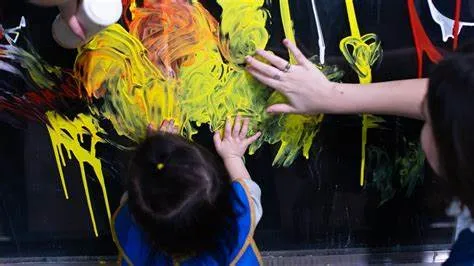Art therapy is a dynamic and evolving field that harnesses the power of artistic expression to promote emotional, mental, and psychological well-being. University art therapy programs provide the academic foundation, clinical training, and practical experience necessary to cultivate skilled professionals in this healing discipline. Whether for aspiring therapists or those looking to expand their therapeutic toolbox, these programs offer a structured path to understanding and applying the therapeutic benefits of art.

What is Art Therapy?
Art therapy is a form of psychotherapy that uses art-making—such as painting, drawing, sculpture, or other forms of visual art—as a way to express and process emotions. This therapeutic practice is grounded in the belief that creative expression can foster healing and personal growth. It is especially beneficial for individuals who may struggle to articulate their feelings through words. Art therapy helps people confront trauma, anxiety, depression, and other mental health challenges by tapping into the non-verbal parts of the mind.
Key Components of University Art Therapy Programs
University programs in art therapy integrate a blend of psychology, counseling techniques, and art-based interventions. A typical curriculum includes the following components:
- Foundations in Psychology and Counseling: To practice art therapy, students need a strong grounding in psychological theories and therapeutic techniques. Most programs begin with foundational courses in developmental psychology, counseling theory, and human behavior.
- Art Techniques and Media: Students are trained in a variety of art forms and media, enabling them to guide their future clients in self-expression using different artistic modalities. These courses often include hands-on workshops in painting, drawing, sculpture, and digital media.
- Clinical Training and Supervision: Practical, hands-on experience is vital for any therapist. University art therapy programs include clinical practicums and internships where students work under the supervision of licensed professionals. These experiences offer students the chance to engage with real clients in a therapeutic setting, applying their learned techniques in practice.
- Research Methods and Ethics: Art therapy programs often require students to complete coursework in research methodologies and ethical considerations. Understanding research in art therapy equips students with the ability to critically evaluate the effectiveness of their interventions and contribute to the body of knowledge in the field.
- Cultural Competency and Diversity: Many programs emphasize the importance of understanding clients from various cultural backgrounds and incorporating culturally sensitive practices. This aspect of training ensures that future therapists can work effectively with diverse populations.
Graduate-Level Training: Master’s and Doctoral Programs
Art therapy is generally a graduate-level discipline. To become a licensed art therapist in most countries, one must hold at least a master’s degree in art therapy or a closely related field. Master’s programs typically take two to three years to complete and are structured to meet licensure requirements.
Some universities also offer doctoral programs in art therapy or related fields, allowing professionals to further specialize or engage in research. Doctoral studies in art therapy focus on advanced clinical skills, leadership, and the creation of new knowledge through research.
Career Opportunities in Art Therapy
Graduates of university art therapy programs are equipped to work in a variety of settings, including:
- Hospitals and Clinics: Art therapists often work in healthcare settings, providing emotional support to patients dealing with illness, trauma, or mental health conditions.
- Schools: Art therapy is used in schools to support children and adolescents, particularly those with learning difficulties, behavioral issues, or emotional challenges.
- Private Practice: Some art therapists choose to open their own private practices, offering one-on-one sessions or group therapy.
- Community Organizations: Non-profits and community centers frequently employ art therapists to work with specific populations, such as refugees, the elderly, or individuals affected by addiction.
Accreditation and Licensure
Accreditation is an essential aspect of selecting a university art therapy program. In the U.S., the Commission on Accreditation of Allied Health Education Programs (CAAHEP) and the Accreditation Council for Art Therapy Education (ACATE) oversee the accreditation of art therapy programs. Graduates of accredited programs are eligible to become Registered Art Therapists (ATR) or pursue state licensure, depending on local requirements.
Top University Art Therapy Programs
Several universities are renowned for their art therapy programs. While the exact ranking may vary by country and year, some top institutions for art therapy education include:
- New York University (NYU) – Known for its rich history in art and therapy, NYU offers a comprehensive MA in Art Therapy.
- Drexel University – Drexel’s program integrates art therapy with counseling, providing a holistic approach.
- School of the Art Institute of Chicago (SAIC) – SAIC offers an MA in Art Therapy and Counseling, blending artistic excellence with therapeutic techniques.
- Lesley University – A leader in expressive arts therapy, Lesley’s programs emphasize creativity in mental health care.
- George Washington University – Known for its dual degree in Art Therapy and Counseling, providing students with a solid clinical foundation.
Conclusion
Art therapy programs at the university level are essential for those looking to integrate creative processes into mental health practice. They offer a robust education in both psychology and the arts, coupled with essential clinical experience. As mental health becomes increasingly recognized as a crucial component of overall well-being, the demand for trained art therapists continues to grow, making these programs an important pathway to a meaningful and impactful career.
By enrolling in an accredited art therapy program, students gain the knowledge, skills, and experience to help others unlock the healing potential of art, offering new avenues for mental health care and personal growth.
